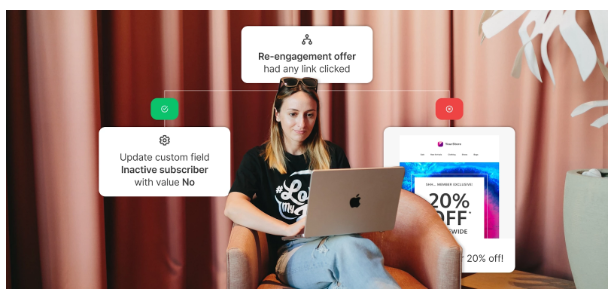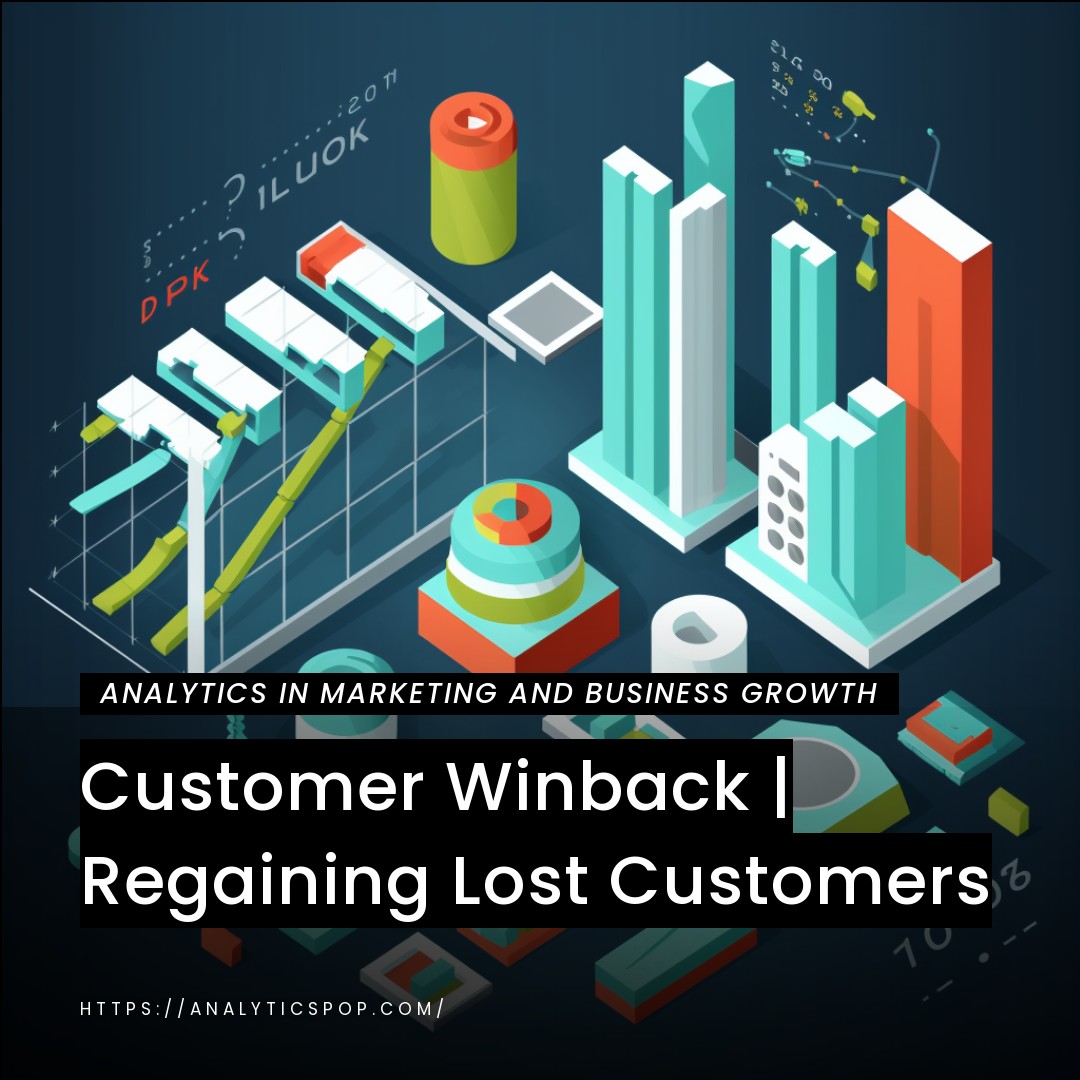Winning lost customers is crucial for businesses aiming to maximize revenue and strengthen customer loyalty. Implementing effective strategies can significantly improve customer win-back rates. One successful approach is personalized outreach.
By analyzing customer data, such as purchase history and preferences, businesses can tailor their communication to reconnect with lost customers. Providing compelling offers, exclusive discounts, or personalized recommendations based on their previous interactions can reignite their interest.
Another strategy is to leverage customer feedback. Conducting surveys or reaching out for feedback demonstrates a commitment to improving their experience. Identifying and addressing the reasons for their departure allows businesses to rectify issues and show genuine concern for customer satisfaction.
Timing is essential when trying to win back lost customers. Swiftly reaching out after their departure reminds them of their favorable experiences and shows that their absence was noticed. Implementing automation tools can help streamline this process and ensure timely follow-ups.
Lastly, businesses should focus on building long-term relationships with reacquired customers. Providing exceptional post-purchase experiences, personalized communication, and loyalty programs can foster loyalty and prevent future churn.
By employing these strategies, businesses can increase their chances of winning back lost customers, driving revenue growth, and establishing lasting customer relationships.
Understanding the Importance of Customer Winback
Customer win-back is a vital aspect of business growth and sustainability. Understanding the importance of customer win back can help organizations thrive in today’s competitive landscape.
- Firstly, winning back lost customers is cost-effective compared to acquiring new ones. Research suggests the probability of selling to an existing customer is higher than to a new prospect. By re-engaging with former customers, businesses can tap into an already established relationship and leverage the trust and familiarity they have built.
- Secondly, lost customers possess valuable insights. When customers leave, it presents an opportunity for businesses to learn from their departure. By analyzing the reasons behind their defection, organizations can identify areas of improvement, address any shortcomings, and enhance their overall product or service offering.
- Furthermore, winning back customers can strengthen brand loyalty. Businesses can rebuild trust and loyalty by demonstrating a commitment to resolving past issues and delivering exceptional experiences. Satisfied, reacquired customers are likelier to become brand advocates, spreading positive word-of-mouth and attracting new customers.
- Customer win-back also contributes to long-term profitability. Repeated purchases from reacquired customers increase customer lifetime value, ultimately driving revenue growth. A successful win-back strategy can also prevent negative customer reviews or feedback from circulating, protecting the brand’s reputation.
Customer win-back is essential for businesses seeking sustainable growth. It offers cost-effectiveness, valuable insights, strengthened loyalty, and long-term profitability. Organizations can maximize their customer base and thrive in a competitive market by implementing effective win-back strategies.

The significance of customer win-back in business growth and profitability
Customer win-back plays a crucial role in driving business growth and enhancing profitability. Here’s why it holds such significance:
- Revenue Recovery: Winning back lost customers presents a significant opportunity to recover lost revenue. Reacquiring customers previously engaged with the business can result in immediate sales and boost the bottom line. Since these customers are already familiar with the brand, they may require less time and effort to convert than acquiring new customers.
- Cost-Effectiveness: Customer win-back is a cost-effective strategy compared to acquiring new customers. Acquiring new customers often involves higher marketing and acquisition costs, whereas reaching out to past customers typically incurs lower expenses. By targeting those who have already shown an interest in the brand, businesses can optimize their marketing spend and allocate resources more efficiently.
- Enhanced Customer Lifetime Value (CLV): Re-engaging lost customers positively impacts customer lifetime value. Customers who return after being won back have the potential to continue their engagement with the business, making additional purchases over an extended period. By increasing CLV, businesses can maximize revenue from each customer and improve overall profitability.
- Customer Insights and Feedback: Customer win-back efforts provide an opportunity to gather valuable insights and feedback. By understanding the reasons behind customer churn, businesses can identify patterns and root causes. This information can guide improvements in products, services, and overall customer experience, thereby reducing future customer attrition.
- Brand Loyalty and Advocacy: Successfully winning back lost customers can strengthen brand loyalty. Businesses can rebuild trust and foster long-term loyalty by demonstrating a commitment to addressing past issues and providing exceptional experiences. Satisfied, reacquired customers are likelier to become brand advocates, promoting the business to others and attracting new customers.
- Competitive Advantage: Implementing an effective customer win-back strategy can provide a competitive edge. By proactively contacting lost customers and addressing their concerns, businesses demonstrate a customer-centric approach that distinguishes them from competitors. This can lead to increased customer retention and market differentiation.
Customer win-back significantly contributes to business growth and profitability by recovering revenue, optimizing costs, increasing customer lifetime value, gathering insights, fostering brand loyalty, and gaining a competitive advantage. By prioritizing win-back efforts, businesses can unlock substantial benefits and ensure sustainable success in the market.
Examining the reasons behind customer attrition and the potential impact on revenue
Examining the reasons behind customer attrition is crucial for understanding its impact on revenue. Several factors can contribute to customer churn, and each has the potential to affect the bottom line in different ways:
- Dissatisfaction with Products or Services: If customers are dissatisfied with the quality, functionality, or performance of products or services, they are more likely to churn. This can lead to a direct loss of revenue as customers cease their purchases or seek alternatives elsewhere.
- Poor Customer Service: Inadequate customer service experiences, such as long response times, unhelpful support, or unresolved issues, can drive customers away. A negative customer service experience may result in lost revenue from the departing customer and potential negative word-of-mouth, which can impact future customer acquisition and retention.
- Price Sensitivity: Customers are often sensitive to pricing changes. If a business increases prices without providing added value or competitive differentiation, it can prompt customers to explore cheaper alternatives, leading to attrition. This directly impacts revenue, especially if many customers churn due to pricing concerns.
- Lack of Engagement or Personalization: Customers are more likely to churn When they feel disconnected or unengaged with a brand. Lack of personalized experiences, relevant recommendations, or targeted marketing efforts can contribute to customer attrition. The loss of these customers can result in reduced revenue and missed opportunities for cross-selling or upselling.
- Competitive Landscape: Intense competition can make it challenging to retain customers. Customers may switch allegiances if competitors offer better products, services, or incentives. This can lead to a direct loss of revenue as customers shift their purchases to competitors.
- Changes in Customer Needs or Circumstances: Customers’ needs and circumstances may change over time. For instance, a business catering to a specific demographic may experience attrition if its customer base ages or shifts to other demographics. Such changes can impact revenue if new customer segments are not targeted effectively.
The impact of customer attrition on revenue can be substantial. Not only does it result in the immediate loss of sales, but it also affects customer lifetime value, as future revenue from repeat purchases is forgone. Additionally, the cost of acquiring new customers to offset attrition can be significantly higher than retaining existing ones.
Understanding the reasons behind customer attrition allows businesses to implement targeted strategies to minimize churn and its impact on revenue. By addressing customer concerns, enhancing customer experiences, and staying competitive, businesses can mitigate attrition and maintain a healthier revenue stream.

The value of existing customer relationships and the potential for re-engagement
Existing customer relationships hold immense value for businesses and present significant opportunities for re-engagement. Here’s why they are important and the potential for re-engagement:
- Repeat Purchases and Revenue Growth: Existing customers are more likely to make repeat purchases than new customers. They have already experienced the value and satisfaction derived from the business’s products or services. By nurturing these relationships, businesses can drive consistent revenue growth through ongoing sales and transactions.
- Higher Customer Lifetime Value (CLV): Existing customers can generate higher CLV compared to new customers. CLV represents the total value a customer brings over their entire engagement with the business. By maximizing CLV through cross-selling, upselling, and fostering loyalty, businesses can extract more value from each customer, contributing to long-term profitability.
- Referral and Word-of-Mouth Marketing: Satisfied existing customers can become brand advocates, referring friends, family, and colleagues to the business. Positive word-of-mouth recommendations carry significant weight and can attract new customers at a lower acquisition cost. By nurturing existing customer relationships, businesses can tap into this powerful marketing channel and expand their customer base.
- Feedback and Insights: Existing customers provide valuable feedback and insights. They have firsthand experience with the business’s products, services, and overall customer experience. By actively seeking their feedback, businesses can gather insights to improve offerings, enhance customer service, and address pain points, ultimately strengthening customer satisfaction and loyalty.
- Personalization and Customization: Existing customers appreciate personalized experiences tailored to their preferences and needs. By leveraging customer data and insights, businesses can deliver targeted marketing campaigns, personalized recommendations, and exclusive offers. This level of customization enhances the customer experience, deepens engagement, and fosters long-term loyalty.
- Win-Back Opportunities: When customers lapse or churn, there is a potential for re-engagement and winning them back. Businesses can reignite interest and regain lost customers through targeted win-back strategies, such as personalized outreach, offering incentives, or resolving past issues. The re-engagement of these customers can lead to renewed purchases, revenue recovery, and an extended customer lifetime.
Existing customer relationships are highly valuable to businesses. They contribute to revenue growth, provide opportunities for referral marketing, offer valuable feedback and insights, and allow for personalized experiences. By recognizing the potential for re-engagement and implementing effective strategies, businesses can maximize the value of existing customer relationships, drive loyalty, and achieve sustainable long-term success.
Analyzing and Segmenting Lost Customers
Analyzing and segmenting lost customers is a valuable practice that can provide insights into customer behavior, identify patterns, and inform targeted strategies for customer win-back. Here are the steps involved in this process:
- Data Collection: Gather comprehensive data on lost customers, including their demographics, past purchase history, engagement metrics, reasons for churn, and any available feedback. This data can be obtained through customer relationship management (CRM) systems, surveys, customer service interactions, or transactional records.
- Segmentation Criteria: Determine relevant criteria for segmenting lost customers based on the frequency and recency of purchases, customer lifetime value, reasons for churn, or any other variables that align with your business goals. This allows you to group lost customers into meaningful segments for analysis.
- Analyzing Patterns: Analyze the collected data to identify patterns and common characteristics within each customer segment. Look for trends related to the timing of churn, specific products or services associated with attrition, or any other insights that may emerge from the data. This analysis helps uncover underlying causes of churn and informs targeted win-back strategies.
- Creating Customer Profiles: Develop customer profiles for each segment, describing their characteristics, preferences, and behavior. These profiles clarify who the lost customers are and help tailor win-back efforts to meet their specific needs.
- Identifying Opportunities: Look for opportunities within each segment for potential customer win-back. Determine which segments are more likely to return based on their characteristics, past engagement, or feedback. This allows you to prioritize win-back strategies and allocate resources effectively.
- Developing Win-Back Strategies: Based on the insights gained from the analysis, develop customized win-back strategies for each segment. These strategies may include personalized outreach, targeted offers or discounts, enhanced customer service experiences, or product improvements tailored to each segment’s specific reasons for churn.
- Monitoring and Iteration: Implement the win-back strategies and closely monitor the results. Track the success rates of re-engaging lost customers within each segment and iterate the strategies as needed. Continuously gather feedback and measure the effectiveness of the win-back efforts to refine and optimize your approach over time.
By analyzing and segmenting lost customers, businesses can gain valuable insights into why customers churn and develop targeted win-back strategies to re-engage them. This data-driven approach increases the likelihood of success in customer win-back efforts and helps drive long-term customer retention and revenue growth.

Identifying and categorizing lost customers based on their reasons for leaving
Identifying and categorizing lost customers based on their reasons for leaving is a valuable exercise that can provide insights into customer churn and inform targeted win-back strategies. Here’s how you can approach this process:
- Gather Customer Feedback: Reach out to lost customers through surveys, interviews, or other feedback collection methods to understand their reasons for leaving. Ask open-ended questions to encourage detailed responses and gain deeper insights into their decision to churn.
- Analyze Customer Feedback: Analyze the collected feedback to identify recurring themes or patterns. Look for common reasons mentioned by multiple customers, such as pricing concerns, poor customer service, product dissatisfaction, or a lack of perceived value. This analysis helps categorize the reasons for churn.
- Categorize Churn Reasons: Based on the identified themes and patterns, categorize the reasons for customer churn into distinct categories. For example, you may have categories like Price-related, Service-related, Product-related, Competitor-related, or Personal Circumstances.
- Create Customer Churn Profiles: Develop profiles for each category, describing the characteristics and behaviors of customers who left for those specific reasons. These profiles help you understand each group’s specific needs and pain points and guide the development of targeted win-back strategies.
- Prioritize Churn Categories: Assess the impact and frequency of each churn category to prioritize your efforts. Determine which categories have the highest potential impact on revenue or customer retention and focus on those as your primary areas of concern.
- Develop Targeted Win-Back Strategies: Based on the identified churn categories and customer profiles, develop customized win-back strategies for each category. For example, if pricing concerns were a major reason for churn, you might consider offering personalized discounts or flexible pricing options to re-engage customers in that category.
- Implement and Measure: Implement the win-back strategies and closely monitor the results. Track the success rates of re-engaging customers in each churn category and measure the impact on customer retention and revenue. Continuously evaluate and iterate your strategies based on the outcomes and feedback received.
Businesses can better understand churn dynamics and develop targeted win-back strategies by identifying and categorizing lost customers based on their reasons for leaving. This customer-centric approach increases the chances of success in re-engaging lost customers, improving customer retention, and driving overall business growth.
Utilizing customer data and analytics to gain insights into customer behavior
Utilizing customer data and analytics is a powerful approach to gain valuable insights into customer behavior. Here’s how businesses can leverage customer data to understand their customers better:
- Data Collection: Collect relevant customer data from various sources such as transaction records, CRM systems, website analytics, surveys, social media, and customer interactions. This data can include demographic information, purchase history, browsing behavior, customer preferences, and engagement metrics.
- Data Integration: Integrate and consolidate data from different sources to create a unified view of each customer. This allows businesses to understand better their customer’s interactions across multiple touchpoints and channels.
- Segmentation: Segment customers based on their shared characteristics, behavior, or preferences. This segmentation allows businesses to group customers into meaningful categories, enabling more targeted analysis and personalized marketing strategies.
- Customer Profiling: Develop detailed customer profiles encompassing various attributes, such as demographics, psychographics, preferences, and purchase patterns. These profiles provide a deeper understanding of customer segments and enable businesses to tailor their offerings and communication accordingly.
- Behavioral Analysis: Analyze customer behavior patterns to identify trends, preferences, and purchase triggers. Businesses can gain insights into what drives customer engagement and purchase decisions by studying factors such as browsing history, purchase frequency, and product interactions.
- Predictive Analytics: Apply predictive modeling and machine learning techniques to customer data to anticipate future behavior and trends. Predictive analytics can help identify potential churn risks, determine cross-selling or upselling opportunities, and make personalized recommendations for individual customers.
- Customer Journey Mapping: Map the customer journey by analyzing touchpoints and interactions across various stages. This helps businesses identify pain points, areas of improvement, and opportunities to enhance the overall customer experience.
- Customer Feedback Analysis: Incorporate customer feedback from surveys, reviews, and social media to gain qualitative insights into their experiences, preferences, and satisfaction levels. Analyzing feedback sentiment and common themes helps businesses understand customer sentiment and make informed decisions.
- Continuous Monitoring and Iteration: Monitor customer data and analytics to identify evolving trends, changing customer preferences, or emerging patterns. Regularly refine strategies based on new insights to ensure ongoing relevance and effectiveness.
Businesses can gain deep insights into customer behavior by harnessing customer data and applying analytics techniques. This understanding allows them to make data-driven decisions, personalize customer experiences, optimize marketing efforts, and improve customer satisfaction, loyalty, and business growth.

Segmenting lost customers based on their likelihood of re-engagement and potential value
Segmenting lost customers based on their likelihood of re-engagement and potential value can help businesses prioritize win-back efforts and allocate resources effectively. Here’s how you can approach this segmentation:
Likelihood of Re-engagement:
- Recent Churn: Identify customers who recently churned, as they may still have a connection or familiarity with your brand. Focus on this segment as they are more likely to consider re-engagement.
- Engagement History: Analyze the level of engagement before churn. Customers who were highly engaged and active before leaving may have a higher likelihood of re-engagement than those with minimal interaction.
- Reason for Churn: Consider the reasons customers provided for leaving. Some reasons may indicate a higher chance of re-engagement, such as price concerns, temporary issues, or changes in personal circumstances that may be reversible.
Potential Value:
- Historical Value: Evaluate the lifetime value of lost customers before they churned. If re-engaged, customers who were high spenders or made frequent purchases may have a higher potential value.
- Customer Segmentation: Utilize existing customer segmentation to assess the potential value of lost customers. If a customer belonged to a valuable segment before churning, they might have a higher potential value upon re-engagement.
- Upsell/Cross-sell Opportunities: Identify lost customers with the potential for upselling or cross-selling. Customers interested in additional products or services have a higher potential value if they can be successfully re-engaged.
Combined Segmentation: Combine the likelihood of re-engagement and potential value segments to create a comprehensive segmentation approach. This can result in segments such as “High Likelihood, High Value” for customers who are both likely to re-engage and have significant potential value or “Low Likelihood, Low Value” for customers with low re-engagement probability and limited potential value.
Businesses can prioritize their win-back strategies and tailor their efforts accordingly by segmenting lost customers based on their likelihood of re-engagement and potential value. This targeted approach enables effective resource allocation, maximizes the chances of re-engaging valuable customers, and enhances overall win-back success rates.
Implementing Effective Customer Winback Strategies
Implementing effective customer win-back strategies requires a thoughtful and systematic approach. Here are key steps to consider when developing and executing win-back strategies:
- Segment Lost Customers: Segment lost customers based on their characteristics, behavior, and reasons for churn. This segmentation helps tailor win-back strategies to address specific needs and preferences.
- Analyze Churn Reasons: Analyze the reasons behind customer churn to identify common pain points and areas for improvement. Use customer feedback, surveys, and data analysis to gain insights into the root causes of attrition.
- Develop Targeted Communication: Craft personalized and compelling messages to reconnect with lost customers. Address their concerns, offer solutions, and highlight improvements made since departure. Use multiple communication channels, such as email, direct mail, or personalized landing pages, to reach out effectively.
- Incentives and Offers: Consider offering incentives to entice customers back. These can include exclusive discounts, loyalty program benefits, free trials, or personalized offers based on their previous interactions. Tailor the incentives to align with each segment’s preferences and motivations.
- Engage through Multiple Touchpoints: Utilize various touchpoints to engage with lost customers. This can include email campaigns, social media interactions, personalized content, or targeted advertising. Consistent and meaningful communication across multiple channels helps maintain top-of-mind awareness and rekindles their interest.
- Provide Exceptional Customer Service: Prioritize exceptional customer service in win-back efforts. Address any outstanding issues promptly, listen to their concerns, and go the extra mile to exceed their expectations. Delivering exceptional service can rebuild trust and loyalty.
- Test and Measure: Implement A/B testing and measure the effectiveness of different win-back strategies. Test different messaging, offers, timing, or communication channels to optimize results. Monitor key metrics such as response rates, conversion rates, and customer re-engagement to assess the success of your efforts.
- Continuous Improvement: Continuously learn and adapt based on customer feedback and performance data. Analyze the outcomes of win-back campaigns, identify areas for improvement, and iterate on your strategies to enhance future win-back initiatives.
- Customer Experience Enhancement: Focus on improving the customer experience to prevent future churn. Incorporate feedback from win-back efforts to enhance products, services, and processes, ensuring a positive experience that keeps customers engaged and satisfied.
Remember, customer win-back is an ongoing process that requires persistence, customer-centricity, and adaptability. Implementing these strategies and continuously refining your approach can effectively re-engage lost customers, drive customer retention, and foster long-term business growth.

Developing personalized and targeted win-back campaigns
Developing personalized and targeted win-back campaigns is essential to reconnect with lost customers effectively. Here are key steps to creating such campaigns:
- Segment Lost Customers: Segment lost customers based on their characteristics, behavior, and reasons for churn. This segmentation allows you to create tailored win-back campaigns that resonate with each segment.
- Customer Profiling: Develop detailed customer profiles for each segment, including their preferences, past interactions, purchase history, and any available feedback. These profiles provide insights into the individual needs and motivations of lost customers within each segment.
- Craft Personalized Messages: Create personalized messages for each segment, addressing their specific concerns and highlighting the value proposition that aligns with their needs. Use the customer profiles to customize the content, ensuring relevance and resonance.
- Communicate through the Right Channels: Select the most effective communication channels to reach each segment. This can include personalized emails, direct mail, targeted social media ads, or SMS messages. Tailor the channel selection based on the preferences and behavior of each segment.
- Highlight Improvements and Offers: Showcase the improvements made since customers left and highlight any special offers or incentives designed specifically for their segment. Communicate how their feedback has driven positive changes, making them feel valued and listened to.
- Timing and Frequency: Determine your win-back campaigns’ optimal timing and frequency. Consider the customer’s last interaction, purchase cycle, and typical engagement patterns. Avoid being too intrusive while ensuring you stay on their radar.
- Test and Optimize: Implement A/B testing to experiment with different messaging, offers, and campaign elements. Test variables such as subject lines, call-to-action language, or offer types to identify the most effective combination for each segment. Continuously optimize based on the results to maximize engagement and conversion rates.
- Personalized Landing Pages or Offers: Create personalized landing pages or offers that directly address the needs and interests of each segment. These dedicated experiences enhance personalization and make the win-back campaigns more impactful.
- Monitor and Track: Set up tracking mechanisms to monitor the performance of your win-back campaigns. Measure key metrics such as response, conversion, and customer re-engagement. Analyze the results to assess the effectiveness of your campaigns and make data-driven adjustments.
- Continuous Improvement: Gather feedback from the win-back campaigns and use it to refine your strategies. Continuously improve your understanding of each segment, optimize your messaging, and iterate on your campaigns to achieve better results over time.
By following these steps and adopting a customer-centric approach, you can develop personalized and targeted win-back campaigns that speak directly to the needs and motivations of lost customers. This personalization increases the chances of re-engagement and fosters a stronger connection, ultimately driving customer retention and business growth.



